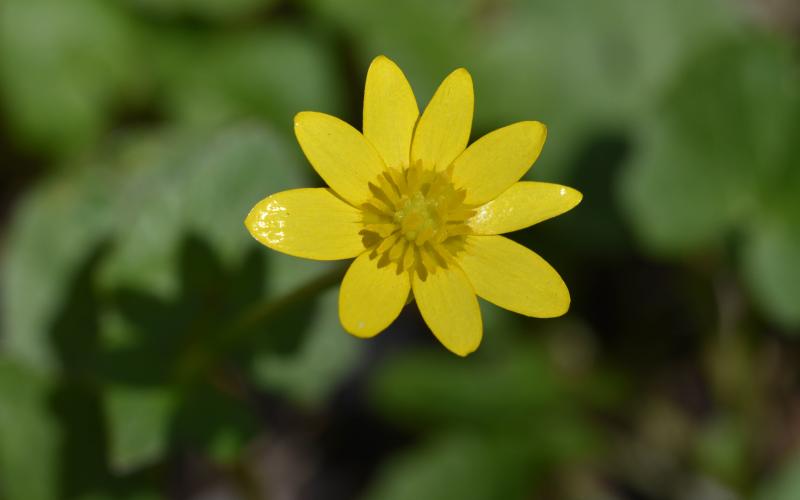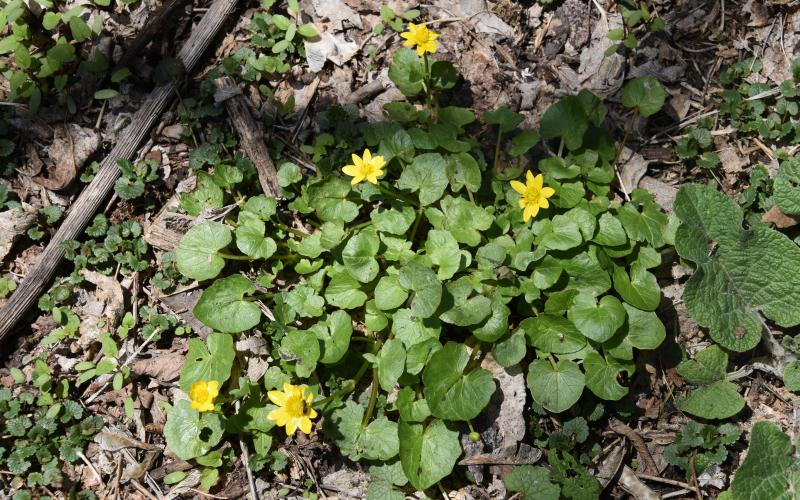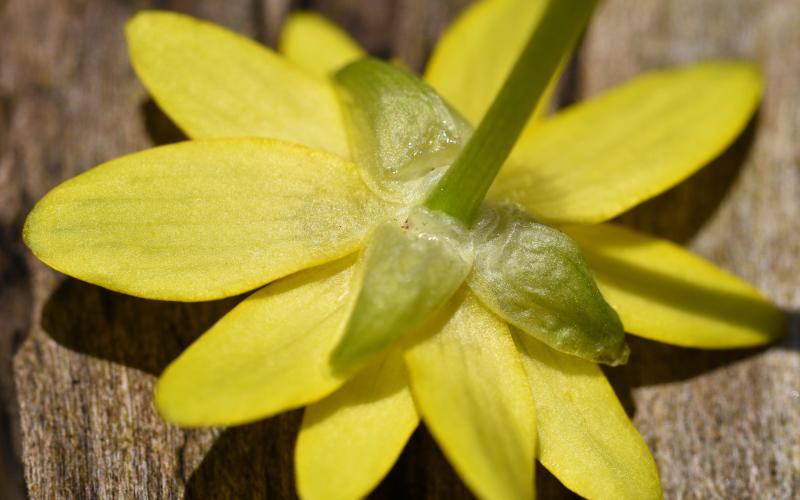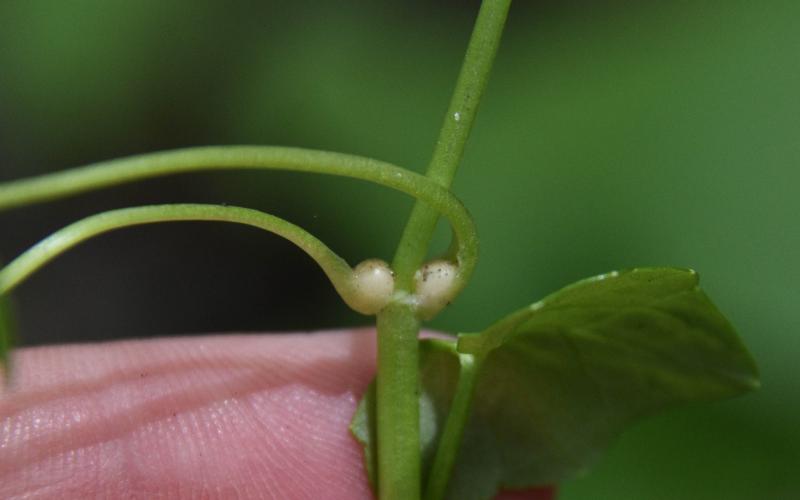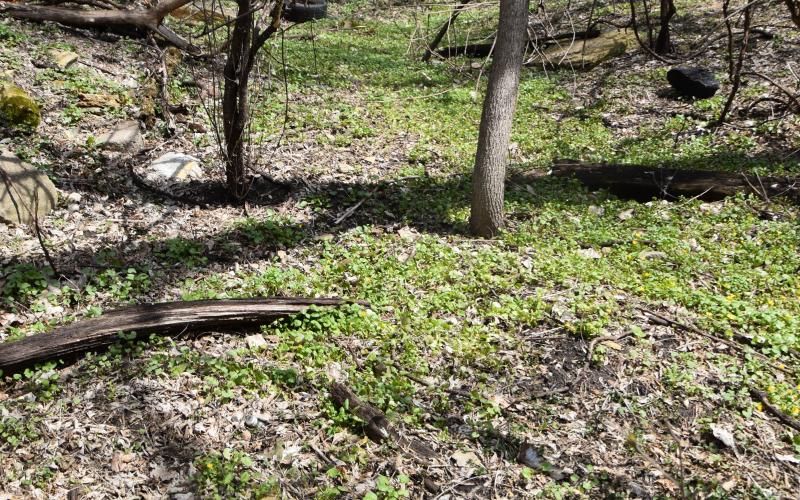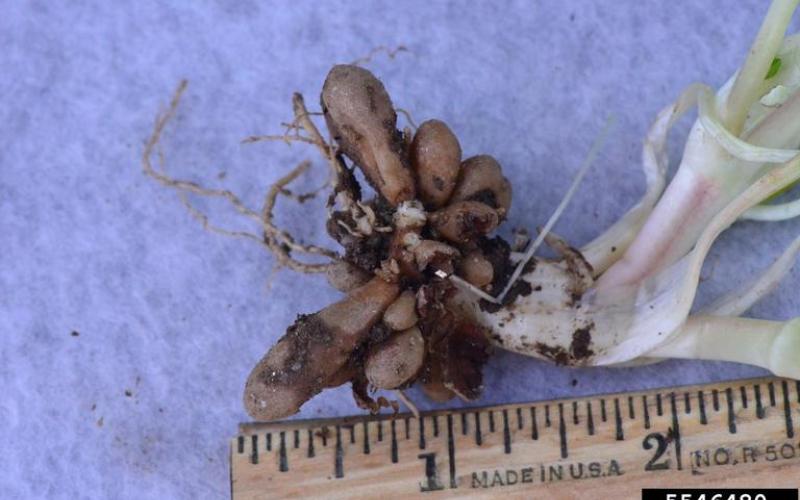Common names: Lesser celandine, fig buttercup
Scientific name: Ficaria verna L. (previously Ranunculus ficaria)
Legal status
Propagation and sale of this plant are prohibited in Minnesota. Transportation is only allowed when in compliance with Minnesota Statute 18.82. Although Restricted Noxious Weeds are not required to be controlled or eradicated by law, landowners are strongly encouraged to manage these invasive plants on their properties to reduce spread into new areas.
Background
Lesser celandine is an herbaceous perennial with a short growth window. It is native to Europe, northern Africa, western Asia, and Siberia. It was first introduced to the eastern United States as an ornamental plant in the late 1800’s. It escapes cultivation, and in one Ohio park, it covers a 400-acre area. In Minnesota, it starts to grow as soon as the snow melts and completes its lifecycle by June. It spends most of the year as underground tubers.
Description
- Lesser celandine is a short herbaceous perennial, 4 to 12 inches tall.
- It is low-growing and mat-forming. It can create dense mats that exclude native spring ephemeral species, or early blooming species.
- The flowers of lesser celandine have 8-12 petals and are showy and bright yellow in color. They have a striking glossy shine to them.
- On the underside of the flower, there are three green sepals which are about two-thirds the length of the petals.
- In Minnesota, it flowers in early spring, as early as late March, and as late as early May.
- The leaves are on short stalks, and are kidney-shaped, with a heart-shaped base, varying in size between 1.6-3.5 inches wide. They are dark green in color and smooth with wavy edges.
- Along the stems of lesser celandine, spherical white structures (bulbils) form after the plant flowers.
- The roots of lesser celandine are fibrous, with small, potato-like tubers.
Habitat
Lesser celandine can grow in any light condition, from full shade to full sun. It also can grow in any soil condition, though it prefers moist, sandy soils, along streambanks, and in floodplain forests. It also is a known garden escapee so can be common in urban areas.
Means of spread and distribution
Lesser celandine can produce up to 70 seeds per plant. Seeds can be viable, but the main reproductive strategy of lesser celandine is vegetative. There are two main vegetative reproductive structures of lesser celandine, bulbils, and underground tubers. The bulbils of lesser celandine are tiny, often whitish in color, and occur at each stem axil, making them abundant throughout each plant. The tubers are small and finger-like. Since it is often found near water, flood events can further spread its bulbils and tubers.
Lesser celandine is currently found in 31 states, across the eastern United States from Georgia north to New Hampshire, and west to Kansas and Texas. It can also be found as far north as northern Wisconsin and is in two pacific northwest states and two Canadian provinces. In Minnesota, we have small infestations in several counties.
Impact
Lesser celandine has a short lifecycle and is one of the first plants to emerge in the spring. It is low-growing and divides to form dense mats. These thick mats can outcompete native spring ephemeral species. Because infestations can crowd out native species, quite often in the rest of the season, nothing else but other weedy species grow where monocultures of lesser celandine exist.
Prevention and management
- The reproductive strategies of lesser celandine can make it a challenging plant to control. The window for control is quite short, making persistence and follow up in subsequent years key to management. Once small populations are found, they should be controlled quickly to prevent further spread. Its short lifecycle also makes it a difficult plant to detect.
- Manual control is possible if there are small infestations, but care should be taken to dig up all the plant’s parts, bagging and properly disposing the plant material to avoid moving bulbils and tubers.
- Mowing should not be done as that could spread bulbils further.
- For larger infestations, the use of systemic herbicides will be most effective. For chemical control, contact your local University of Minnesota Extension agent, co-op, or certified landscape care expert.
Toxicity
Like other members of the toxic buttercup family, lesser celandine is mildly toxic, plants are poisonous to humans and livestock if ingested raw. Contains pyrrolizidine alkaloids, which may cause liver damage in humans. Grazing animals might not prefer to graze on lesser celandine as it has a bitter taste.
